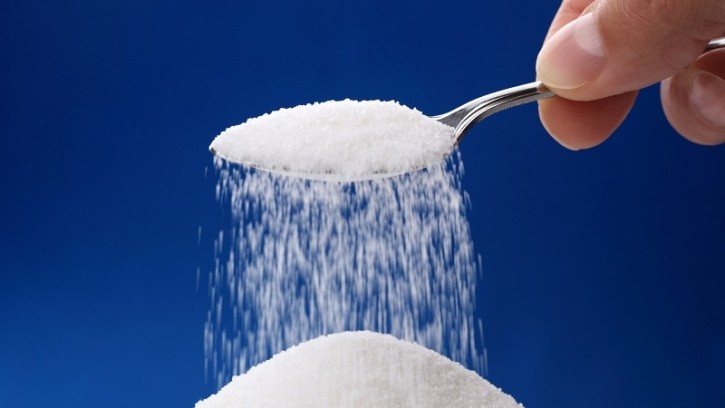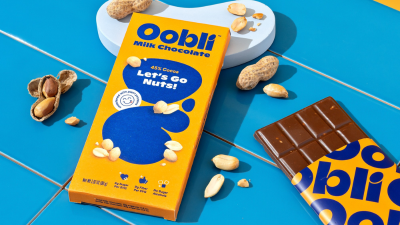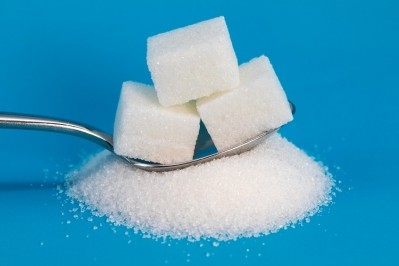Sugar reduction in 2024: How consumer demands, health policies will influence product launches

“There [are] two buckets of innovation. One is related to the education and the community outreach that's going on to really help people better understand where is the added sugar? How can I cut back if I want to cut back,” Krystal Register, registered dietician and senior director of health and well-being at FMI, told FoodNavigator-USA. “Then, the other bucket is obviously product innovation efforts. ... Products either being developed without added sugar or reduced amounts of added sugar or the use of non-nutritive sweeteners.”
Zero-sugar replaces the diet trend, natural sweeteners on the rise
Overall, the zero-sugar food and beverage markets are expected to grow in 2024 and beyond, as consumers continue to look for products to support their health. Zero-sugar has gradually “replaced what used to be the diet” trend and has become a claim consumers seek out on pack, Scott Dicker, market insights director at SPINS, told FoodNavigator-USA.
The global zero-sugar food and beverage market is expected to grow from $19.17bn in 2023 to $23.30bn in 2028, growing at a 3.98% CAGR during the time, according to a ReportLinker report. The zero-sugar beverage market will see accelerated growth, growing from $3.328bn in 2023 to $13.151bn by 2033, growing by a 14.7% CAGR during the period, according to a Future Market Insights report.
Most consumers (72%) are looking to limit or avoid sugar altogether, according to the International Food Information Council’s 2023 Food and Health survey of more than 1,000 US consumers. They are looking to reduce sugar intake by seeking out zero-sugar claims on products that aren’t often associated with the sweetener, Register noted.
"Added sugar shows up sometimes where you don't expect it, like pasta sauce, dressings ... pantry staples that help you put a meal together quickly. One retailer shared an example of the pasta sauce, once word got out on the street that there was no added sugar in this pasta sauce and no other sweetener and it's delicious, they couldn’t keep it on the shelves," Register said.
Consumers are increasingly skeptical of artificial sweeteners like aspartame, which will drive demand for natural sweeteners like monk fruit and stevia, Dicker said. "I think the focus on flavor and sweetener and how to find that balance on clean label and providing the taste and flavor that people want is going to be a key theme," he added.
However, some consumers don’t like the taste of alternative sweeteners, which will create a challenge for CPG companies in the new year, Dicker acknowledged. In a 2023 report, IFIC surveyed 1,000 US consumers on their attitudes about low- and no-calorie sweeteners (LNCS) approximately three in ten Americans regularly consumed them, and a similar percentage claimed they never consumed them. Of those who rarely or never consume LNCS, 26% said they would be interested in more sugar alternatives if they tasted better.
Will 2024 be the year natural sweeteners break out?
Given the high price of sugar, natural sweeteners like stevia, monk fruit, and others are becoming appealing sweetener substitutes, Thom King, CEO and chief food scientist for Icon Foods, told FoodNavigator-USA.
The price of sucralose and sugar went up in 2023, and erythritol and monk fruit prices dropped, he said, sharing data from Icon Foods' ingredients report. Monk fruit harvests were also good this year, yet the prices dropped almost 50%, which is now close to price “parity with stevia,” he added.
When it comes to reformulating products, CPG companies need to first consider all the functionality sugar provides, including mouthfeel and viscosity, King noted. However, they have access to “tools to emulate the viscosity like ... soluble tapioca fiber,” which can “also create that back of the throat sugar feeling,” he added.
CPG brands also need to be “very careful to slowly reduce added sugars” through a stealth-health approach to acclimate consumers to lower sugar products over time, Register explained.
Natural sweeteners like monk fruit, stevia, and others might also see an increase in demand, as weight loss drugs like Ozempic change “the connection that people have with food,” King said. In 2024, CPG companies will also look to add nutritional benefits like fiber back into their products while reducing sugar or salt content, he added.
“Clean-label sugar reduction [isn’t] cheap. It's not like we can compete with the sugar industry, so [it has] been a steady increase, but my gut tells me — no pun intended — that in 2024, we're going to see a big lift, and we're going to see some of the larger CPGs, leaning way more into high fiber, no sugar.”
Sugar consumption becomes a public health concern
Scientific researchers, doctors, and dieticians are also pushing for greater sugar reductions to reduce the negative health impact associated with a diet high in sugar. In an umbrella review of 73 meta-analyses, The BMG found that extra servings of sugar led to higher rates of gout, heart disease, and death, and experts recommended that consumers only consume six teaspoons a day of added sugar.
In November, the FDA held a virtual public meeting and listening session to consider ways to reduce sugar consumption, which followed pressure from The Center for Science in the Public Interest and the New York City Department of Health and Mental Hygiene for the agency to set voluntary targets for reducing added sugar in foods and beverages.
During the hearing, Register highlighted the work that registered dietitian nutritionists were doing today in both retail channels and assisting with product development to improve the health of products, while also sharing the range of low- and zero-sugar products that are currently available on the market today.
"It's important for the public to understand that the food industry works intimately and constantly with those federal agencies to promote their positive messaging to empower consumers. The FDA has great labeling and education tools specific to added sugar, the USDA has MyPlate and how to include your sweets and treats as you build other nutrient-rich meals and snacks."
Sugar reduction has also become a key point of discussion as regulators look to address the childhood obesity crisis in the US. Sugar reduction has become a key focus in addressing the childhood obesity crisis in the US. Earlier this year, the USDA proposed a reduction in sugar and salt, which would bring the calories from added sugar in line with the current Dietary Guidelines for Americans recommendation of having less than 10% of calories coming from added sugar daily.
"The USDA never done anything like this before, so this is groundbreaking, and I also think it's about time. I think that big food has had a really tight grip on kids," King said. "It's really good to see that shift, and it's really good to see the government stepping in and ...taking measures to help CPGs cut back on added sugars, particularly targeted towards children.”





